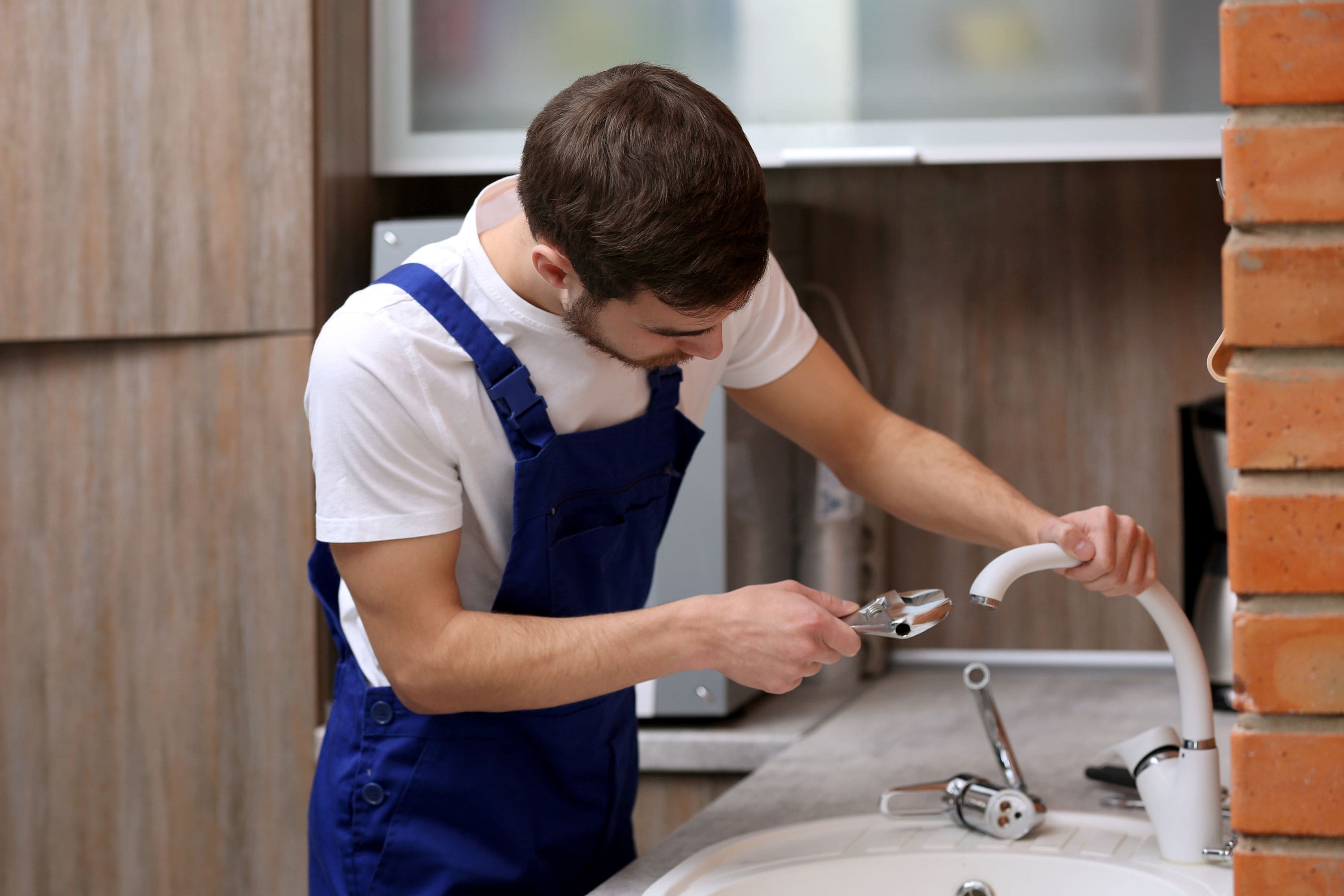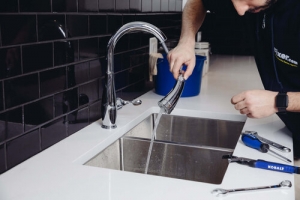Which It's Vital to Fix a Dripping Faucet
Which It's Vital to Fix a Dripping Faucet
Blog Article
The article directly below on the subject of Leaky Faucets: Why They Happen & What to Do About Them is rather captivating. Read on and make your own personal findings.

Trickling taps may appear like a minor aggravation, but their influence goes beyond simply the annoyance of the noise. From drainage to incurring unneeded financial expenses and health and wellness threats, disregarding a trickling faucet can lead to different effects. In this short article, we'll look into why it's vital to resolve this common family concern without delay and effectively.
Waste of Water
Environmental Effect
Dripping faucets contribute dramatically to water waste. According to the Environmental Protection Agency (EPA), a solitary faucet leaking at one drip per secondly can squander more than 3,000 gallons of water annually. This not just strains water resources yet also affects ecological communities and wildlife based on them.
Financial Expenses
Boosted Water Expenses
Past the environmental influence, trickling faucets can blow up water costs substantially. The built up wastefulness in time converts right into greater utility costs, which could have been avoided with timely repairs.
Possible Residential Property Damages
Moreover, long term trickling can result in damage to fixtures and surfaces bordering the tap. Water buildup can create discoloration, corrosion, and also architectural issues if left neglected, causing extra repair service prices.
Wellness Concerns
Mold And Mildew and Mold Growth
The constant presence of dampness from a trickling tap creates a suitable environment for mold and mildew development. These fungi not only compromise interior air high quality but additionally position wellness risks, specifically for people with respiratory problems or allergic reactions.
Waterborne Illness
Stationary water in trickling faucets can end up being a breeding ground for bacteria and various other pathogens, boosting the threat of waterborne diseases. Impurities such as Legionella germs grow in stationary water, potentially causing serious ailments when ingested or breathed in.
Do it yourself vs. Specialist Repair service
Pros and Cons of Do It Yourself Fixing
While some might attempt to take care of a leaking faucet themselves, do it yourself repair services include their own collection of challenges. Without correct understanding and tools, do it yourself attempts can aggravate the problem or result in insufficient repair work, lengthening the issue.
Advantages of Employing a Professional Plumber
Working with a professional plumber makes sure that the underlying cause of the leaking tap is addressed successfully. Plumbers have the proficiency and devices to identify and fix faucet problems effectively, conserving time and decreasing the threat of further damages.
Step-by-Step Overview to Fixing a Dripping Faucet
Tools Required
Prior to attempting to repair a leaking faucet, gather the required tools, consisting of a flexible wrench, screwdrivers, substitute parts (such as washers or cartridges), and plumber's tape.
Common Tap Issues and Their Solutions
Identify the sort of tap and the particular issue creating the drip. Typical problems consist of damaged washers, rusty valve seats, or malfunctioning O-rings. Refer to supplier directions or online tutorials for detailed guidance on fixings.
Preventive Measures
Normal Maintenance Tips
To avoid trickling faucets, perform regular maintenance such as cleaning up aerators, inspecting for leakages, and changing worn-out parts immediately. In addition, take into consideration setting up water-saving gadgets or upgrading to extra effective fixtures.
Value of Prompt Repairs
Resolving dripping faucets as soon as they're observed protects against further water waste and potential damages, eventually saving both water and cash in the long run.
Effect On Property Value
Perception of Well-Maintained Property
Preserving a building in good condition, including resolving maintenance concerns like dripping faucets, boosts its perceived value and worth among prospective customers or renters.
Impact on Resale Worth
Residences with properly maintained plumbing components, including taps, command greater resale worths in the property market. Addressing leaking faucets can contribute to a positive perception throughout building examinations and arrangements.
Ecological Responsibility
Individual Contribution to Preservation
Taking duty for dealing with trickling taps lines up with wider efforts toward water preservation and ecological sustainability. Every individual's activities jointly make a considerable influence on preserving priceless resources.
Lasting Living Practices
By focusing on prompt repairs and embracing water-saving habits, people add to sustainable living techniques that benefit both present and future generations.
Verdict
Dealing with a leaking faucet surpasses plain ease; it's a vital action toward saving water, minimizing financial prices, and guarding health and wellness and property. Whether through do it yourself repairs or expert assistance, doing something about it to fix leaking taps is a little yet impactful means to promote accountable stewardship of resources and contribute to a healthier, much more sustainable future.
How to Fix a Leaky Faucet: Step-by-Step Repair Guide
A leaky faucet may seem like a simple annoyance, but if it's not fixed promptly, that leak could cost hundreds to potentially thousands. From water damage to mold, mildew, and high water bills, even a tiny leak can be catastrophic if left unattended. Damage like this can even affect the overall value of your home, so it's important to take the right approach for leaky faucet repair. You may need the help of a plumber in some cases, but we've got a few tips you can try on how to fix a leaky faucet before calling the pros.
Four Faucet Types
When you're learning how to fix a leaky faucet, the first step is knowing what kind of faucet you're working with! There are four common types.
Cartridge Faucets
Cartridge faucets come in one- or two-handled varieties. In one-handled cartridge faucets, hot and cold water combines in a single cartridge. In the two-handled versions, hot and cold water are controlled separately and mixed in the faucet.
Ball Faucets
Ball faucets have a single lever you push up and down to adjust the pressure and rotate to change the temperature. A slotted metal ball controls the amount of water allowed into the spout.
Compression Washer Faucets
They're the oldest type of faucet, but they're still used in many homes — especially older ones. Compression faucets have two separate handles that, when turned, raise or lower the washer that seals a water valve. This valve stops water from flowing through the faucet when it is turned off.
Disc Faucets
Disc faucets rarely need to be repaired due to their maintenance-free design. The water flow is controlled by two discs — the upper one raises and lowers against a fixed lower disc, creating a watertight seal. If your disc faucet starts leaking, you may need to replace the seals or clean residue buildup from the inlets.
Fixing a Leaky Faucet
Step 1: Turn Off the Water
Whether you're learning how to fix a leaky bathtub faucet or how to fix a leaky kitchen faucet, always turn off the water supply to your working area when you're fixing a leak. The last thing you want is a flood added to your list of things to fix.
Look for the shutoff valves below your sink or around the tub and turn them clockwise to stop the water flow. If your faucet doesn't have shutoff valves, you may need to turn off the water for the whole house. Check to make sure it's off by turning the faucet on. If nothing comes out, you're ready to start the repair.
Step 2: Take Apart the Faucet
How you disassemble your faucet depends on the type of fixture you have. You can use a flathead screwdriver to remove the caps on top of the handle or handles for cartridge and compression faucets. Inside, you should see handle screws. Unscrew these with a screwdriver to remove the handle.
Disc- and ball-style faucets will typically have an inlet screw near the handle, and removing that will reveal the interior of the faucet.
Detach the Valve Stem
For cartridge- and compression-style faucets, you'll see the inner valve stem or cartridge once you remove the faucet handles. If you have a compression faucet, unscrew the brass valve stem. If you have a cartridge faucet, pull out the cartridge. If your cartridge has been in place for a while, it may require some tools or extra force to remove it due to mineral deposits.
Examine and Replace Parts
Once you've removed the parts, check them out to confirm what needs to be replaced. You may see corroded rubber washers, O-rings, stems, or cartridges. On a ball-style faucet, check the seats and springs for damage.
If you need to repair a leaky disc faucet, check the inlet and seals on the lower disc.
Once you determine what parts must be replaced, visit your local hardware store. Bring the damaged parts with you to ensure you can purchase the correct components to replace them.
Clean Valves and Faucet Cavity
If you've removed a stem or cartridge, you may notice mineral buildup in the faucet's threads. Use white vinegar to clean the valve seat by soaking it for a few minutes, then scrub it away with a soft toothbrush and rinse with warm water. You can also clean the interior of the faucet in the same way.
Reassemble the Faucet
Once your faucet is cleaned and the required parts have been replaced, it's time to reassemble it. Put the pieces back together and slowly turn the water supply back on. Doing this slowly is crucial because too much initial water pressure can damage the new hardware you've just installed.
https://homewarranty.firstam.com/blog/how-to-fix-leaky-faucet

As a passionate person who reads about Should I Repair or Replace a Leaky Faucet?, I thought sharing that excerpt was really useful. If you enjoyed reading our blog entry if you please make sure you remember to share it. Thank you so much for taking the time to read it.
Report this page